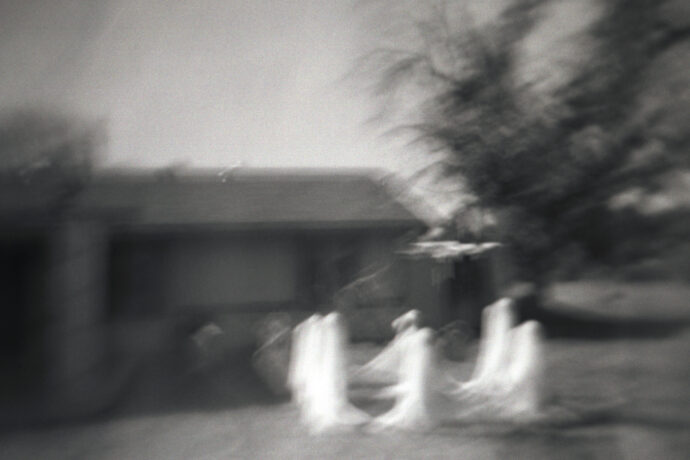Almost no one was fooled last week when footage surfaced of what appeared to be a human sacrifice at the CERN nuclear research facility in Geneva, Switzerland. Footage taken at night from a CERN office shows a cabal of cloaked figures standing around a statue of Shiva (a gift from the Department of Atomic Energy of India). A woman in white is brought forward and stabbed, prompting the anonymous cameraman to flee in terror. The Telegraph noted the cameraman’s reflection in the office window suggests that he is also wearing a ritual cloak and likely a co-conspirator. CERN administrators have dismissed the footage as a hoax and opened an internal investigation. But many remain puzzled as to why people with CERN security badges—presumably visiting scientists—would perpetrate such a hoax. Conspiracy theorists have suggested the footage is a ruse to distract the public from an even darker agenda at CERN.
Before jumping to conclusions, it’s important to remember that researchers at CERN are not always as serious or mature as we might imagine. At least one amateur zombie film has been shot on CERN grounds. And earlier this year a researcher was disciplined for defacing posters for the facility’s LGBT club with slurs and Leviticus quotes.
So why might youthful researchers blow off steam by staging a human sacrifice? In folkloric terms, this prank can be regarded as ostension. Ostension occurs when someone transmits a legend by actually performing the legend rather than telling it. For years, conspiracy theorists have claimed that experiments at CERN are directed by the Illuminati or other sinister forces. Last week’s footage merely reflected this modern legend back to the Internet that spawned it. Technically, the hoax was “pseudo-ostension” because the human sacrifice was only simulated.
Ostensive pranks may be the price we pay for conspiracy theories. Since the end of World War II, government research facilities have become to modern folklore what fairy realms and the underworld were to earlier people: a mythic realm that exists just beyond our normal world from which comes dangerous creatures and fabulous powers.
Before conspiracy theorists warned that CERN’s Large Hadron Collider was being used to revive the Egyptian deity Osiris or open a portal to hell, C.S. Lewis’s novel That Hideous Strength (1945) told the story of government scientists secretly carrying out the work of the devil. By 1955, tales had begun to spread of “The Philadelphia Experiment,” in which a secret naval experiment had allegedly sent a battleship to another dimension, driving its crew insane. Even Netflix’s hit series Stranger Things is based on legends about the decommissioned Montauk Air Force Station in Long Island.
The secret and restricted nature of government facilities allows them to function as a mythic realm in contemporary folklore. But inclusion in modern mythology can be a headache for actual researchers. CERN’s office of media and press relations is repeatedly forced to answer such questions as, “Will CERN open a door to another dimension?” One can hardly blame some researchers for trolling the conspiracy theorists.
If we find this prank in bad taste, we should remember that pseudo-ostension would be impossible without an existing legend to perform. Ironically, those most disturbed by this footage are probably the same conspiracy theorists who inspired it.





